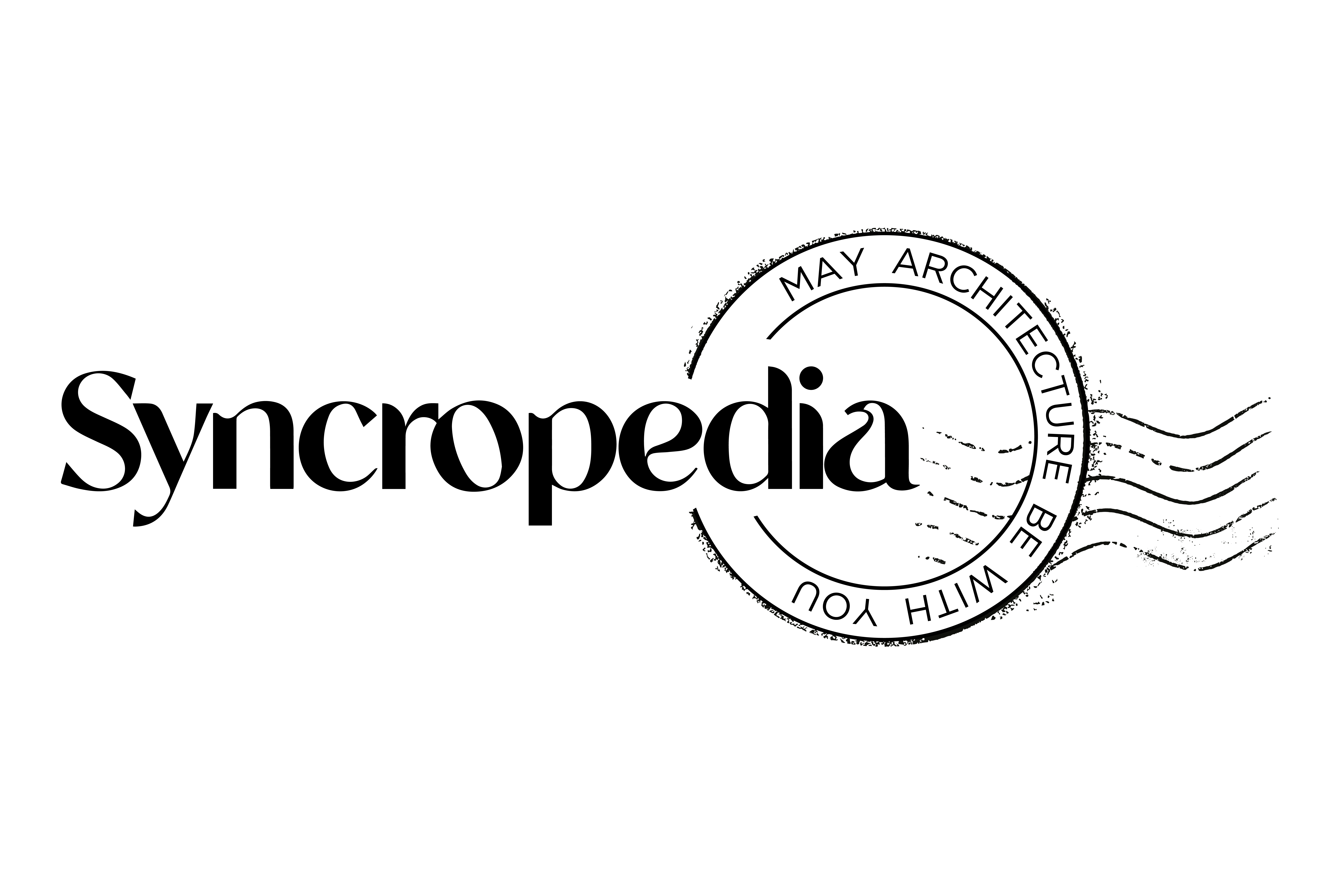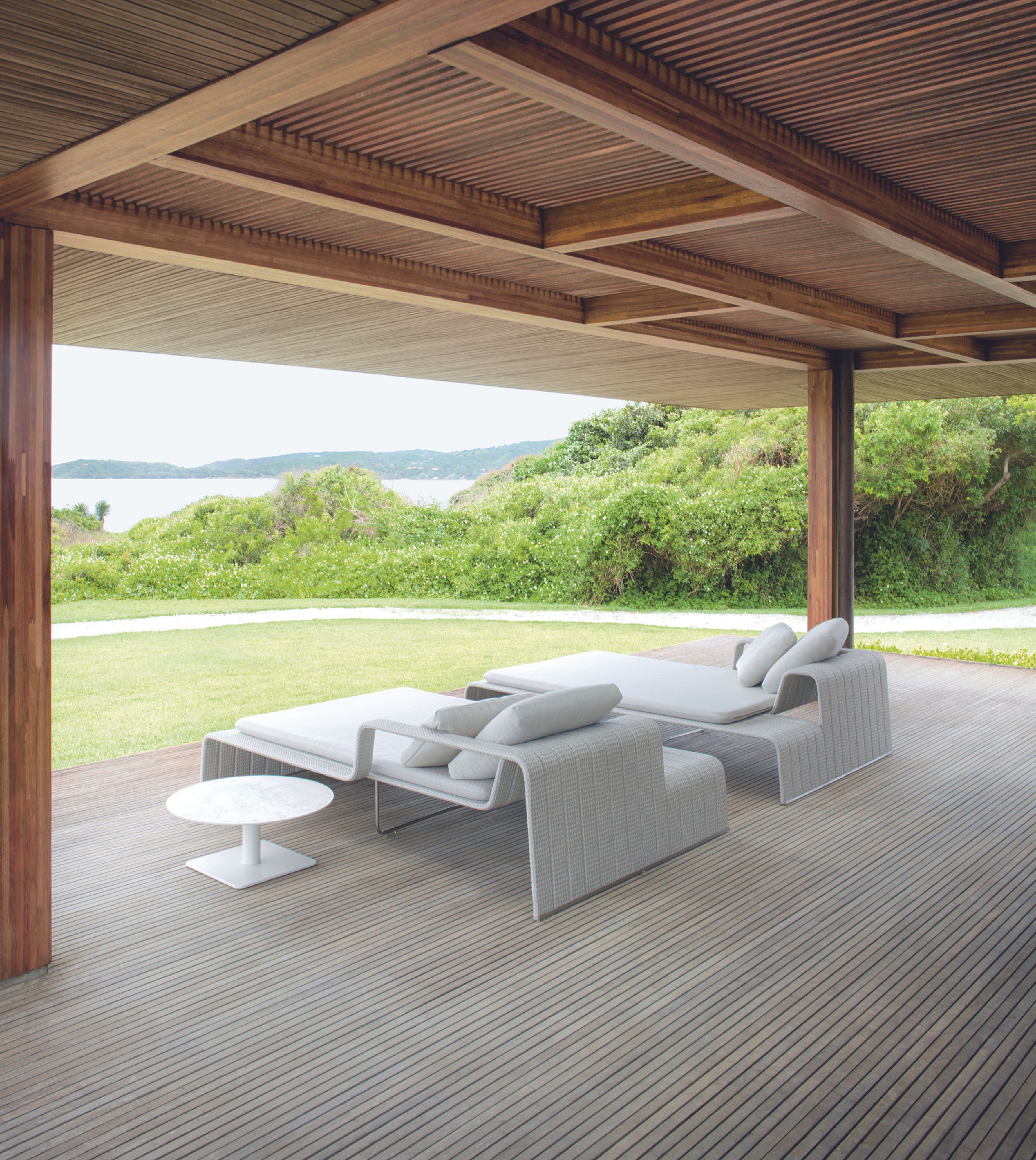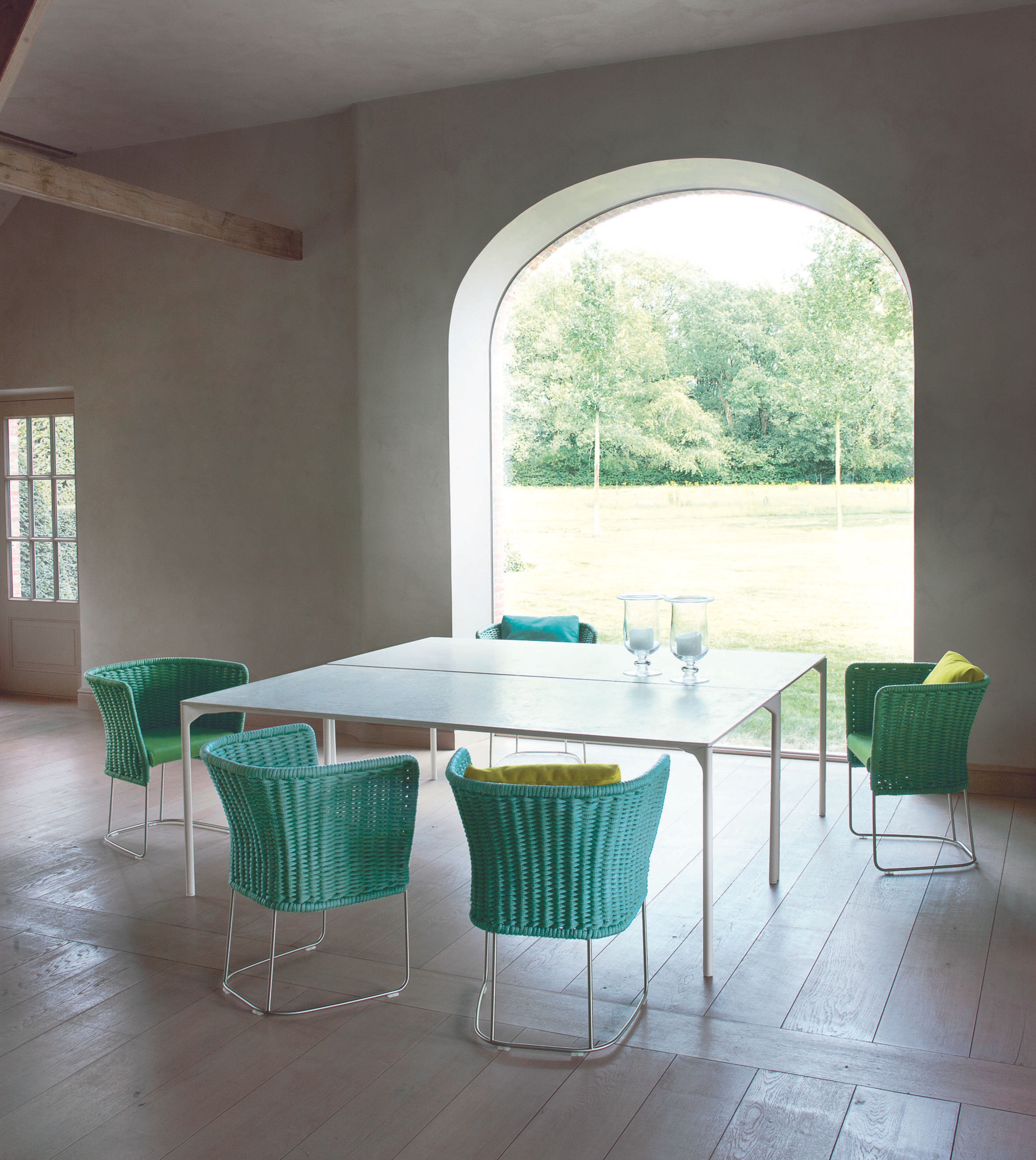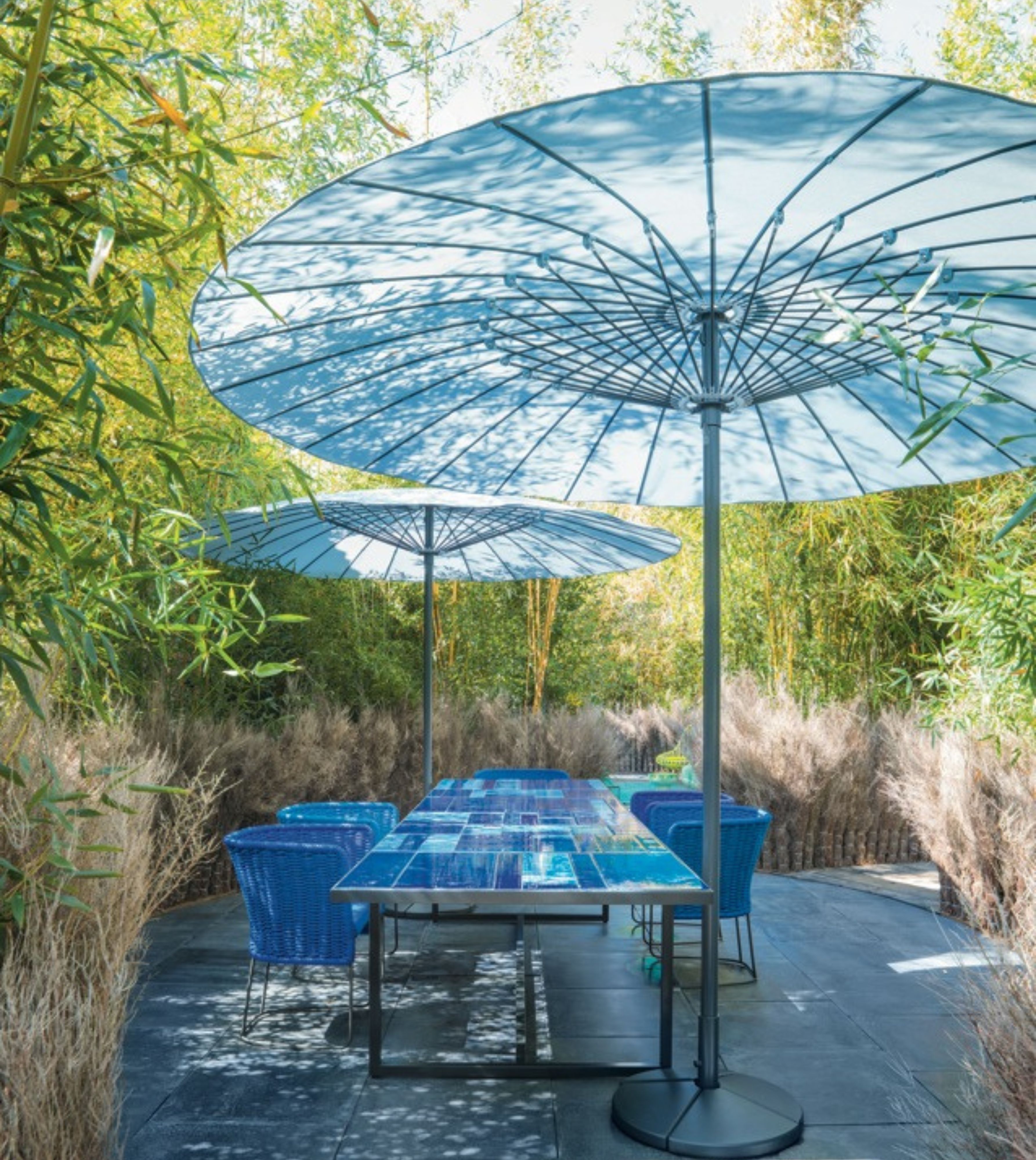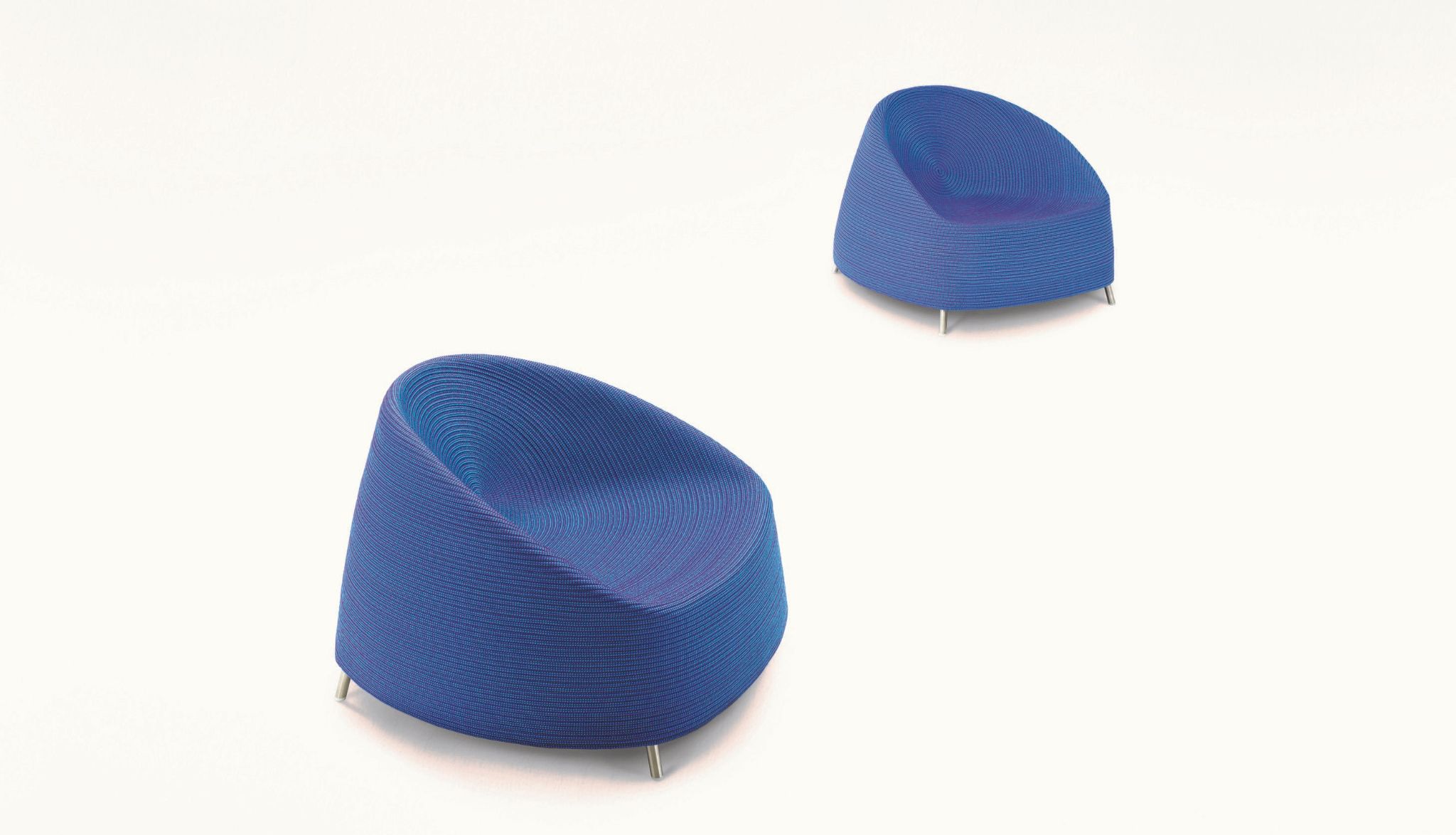Part Two
Did you imagine yourself becoming the person you are today as a child? You have a shy character; how do you relate to the notoriety you have achieved?
Indeed, I have always had a shy nature, and I think I have fortunately remained what I once was: I am grateful for life because it has not changed me despite everything.
An inevitable question on 'genders': yours is a female company; how much and how has being a woman influenced the history of the Paola Lenti brand? And working with women and family members?
It has happened that, for one reason or another, a female team has formed in the company over time, but this is not something that affects our work. Today this is no longer the case: we have been lucky enough to meet the right professionals for our development, key figures who did not necessarily have to be women. Even though we work in different fields, we evaluate everything together. That is why we always manage to go in the best direction: it is an essential partnership for the company's growth. I have been working since 2000 with my sister Anna. That was the year of the decisive turning point: running an industrial business is a demanding activity, and in that year, Anna chose to join the company to turn it into a real business, allowing me to devote all my time to research and creativity.
I still remember your 'origami', then the stoneware objects and the first complements you presented at the fair in the stand with Giorgio Pizzitutti. What do you remember of that season at Macef and the Salone?
Above all, I remember a lightness and 'freshness' that is no longer there, both because I was very young and because many things have changed since then, and not only for me. I have a legitimate nostalgia for that time in my life and still feel grateful for what Giorgio spontaneously did to help me. He was a teacher for me and, in some ways, the father I lost very early on in real life.
Do you usually choose designers and give them a brief or do designers propose a project to you, and how does Paola Lenti's relationship with a designer start and develop?
The Paola Lenti company has a dual nature: it studies, designs and produces design products on the one hand and fabrics and upholstery materials. For this reason, we very often find ourselves with materials that we then entrust to designers to give them life and three-dimensionality. It is undoubtedly a less conventional design approach and has happened very often during the almost thirty years of our activity. An example is the Frame collection, born from a Rope braid. Francesco Rota was able to give the most appropriate shape to make it one of the most recognisable and long-lasting products of our outdoor proposal. This also happened with the ropes with which we make many of our chairs, from the woven ones, such as Ami and Sabi, to the spiral-stitched ones, such as Afra and Otto. Or, more recently, Shibusa, a 100% natural series born from a new interpretation of the traditional Japanese tatami.
A piece of advice for architects and interior designers working on the Syncronia platform?
First of all, learning to work by subtraction, synthesising as much as possible to recognise and avoid any superstructure. And then constantly worrying about the environment and the impact that one's work has on it: our daily work must also be aimed at studying concrete solutions to contain the waste of resources and make each product durable and sustainable. Creativity must be closely intertwined with social responsibility and respect for man, who always remains the centre of our thoughts. This is not just a question of ethics but an unavoidable necessity.
Last question: they tell me you were born a graphic designer; what do you call yourself today?
I would define myself as 'curious' in the sense that I love researching and investigating all those topics that touch on the practical work of the company I founded and which I run with my sister Anna: I always want to understand the true nature of what interests me in my work and look for the hidden side of things. I still feel 'graphic': that is my origin, and I cannot forget it. After all, even working in three dimensions as I do today is an activity that involves visual thinking, even if it is three-dimensional.

Afra 02 and Frame
A piece of advice for architects and interior designers working on the Syncronia platform?
First of all, learning to work by subtraction, synthesising as much as possible to recognise and avoid any superstructure. And then constantly worrying about the environment and the impact that one's work has on it: our daily work must also be aimed at studying concrete solutions to contain the waste of resources and make each product durable and sustainable. Creativity must be closely intertwined with social responsibility and respect for man, who always remains the centre of our thoughts. This is not just a question of ethics but an unavoidable necessity.
Last question: they tell me you were born a graphic designer; what do you call yourself today?
I would define myself as 'curious' in the sense that I love researching and investigating all those topics that touch on the practical work of the company I founded and which I run with my sister Anna: I always want to understand the true nature of what interests me in my work and look for the hidden side of things. I still feel 'graphic': that is my origin, and I cannot forget it. After all, even working in three dimensions as I do today is an activity that involves visual thinking, even if it is three-dimensional.
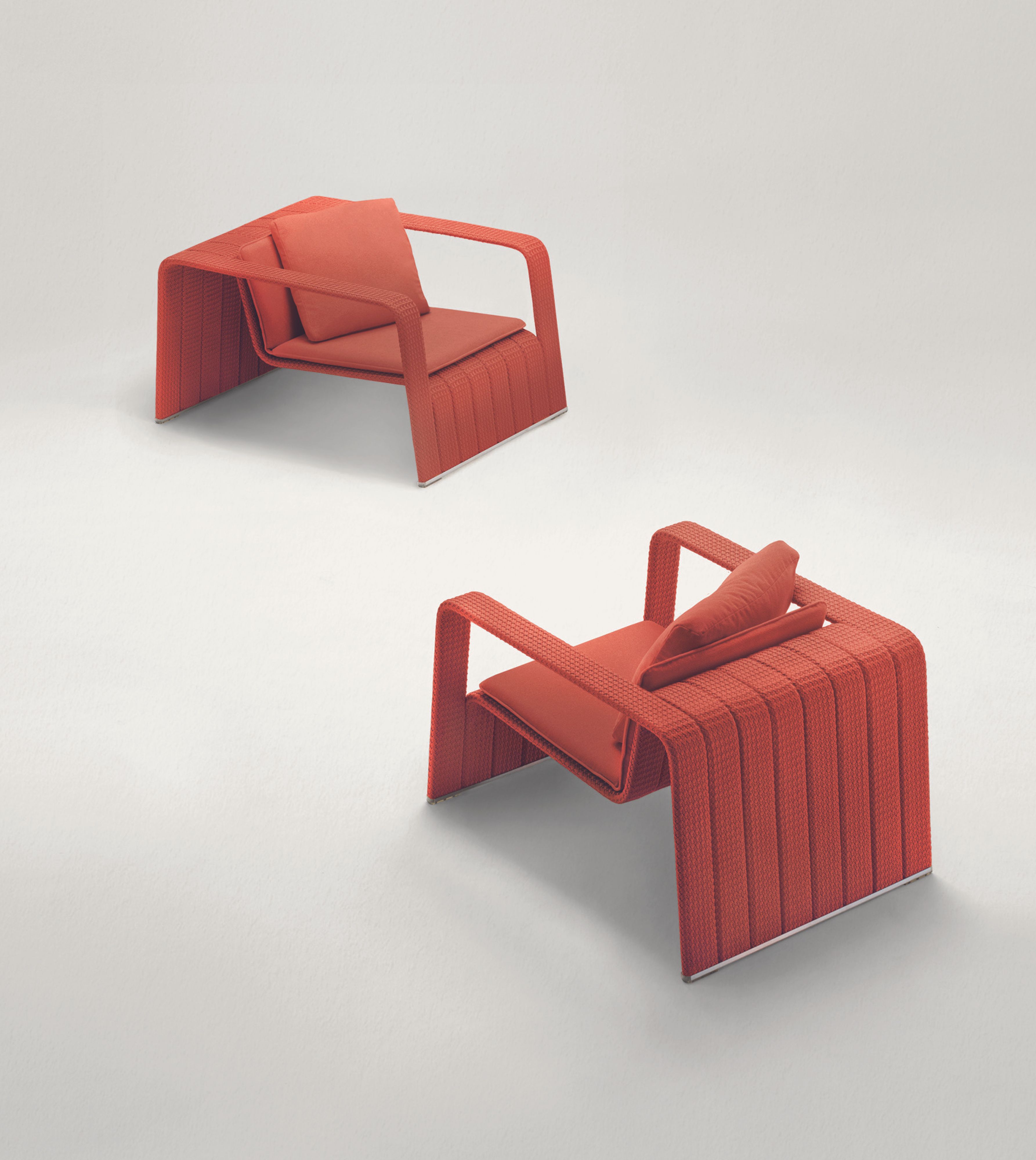 Frame 01
Frame 01

